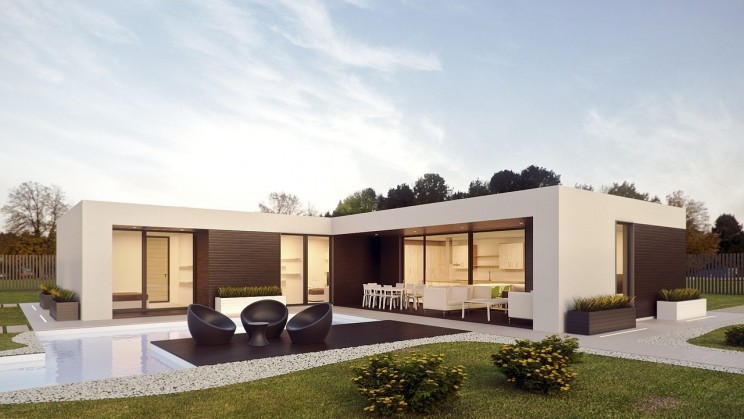
Modular houses are becoming more and more common in Spain. Not surprisingly, they are quick to build and usually cheaper than traditional houses. If you need financing to buy one, you should bear in mind that prefab house mortgages are different from traditional mortgages. Read on for all the key facts.
What do you need to build a prefab house in Spain?
Prefab houses are built in modular form, which means they are made from standardised parts connected on a foundation or ground. Therefore, you only need to do two things:
- Buy a plot of land that can be built on.
- Buy the modular house and install it on said land.
How can I pay for a prefabricated house?
Buying a prefabricated house is similar to buying any other type of house. The main difference is that you usually buy the land where you want to build the house first. Once you have the land, you just have to apply for a mortgage for the prefabricated house.
You can apply for a mortgage to purchase the land and for building the house. However, we recommend that you have the land beforehand. Why? Because this will reduce the total amount of money that the bank has to lend you (you will only need the money for the construction), so it will be more likely that the bank will give you the mortgage.
What is a prefab home mortgage like in Spain?
When applying for a mortgage for a prefab house you should remember that many of the conditions will be similar to those of other mortgages.
For example, the most common will be that the mortgage will not exceed 80% of the house price, so you need to have saved the remaining 20% and an additional 10% for the completion process. In addition, the bank will analyse your financial profile as a client before deciding whether to grant you a mortgage or not.
However, the main difference between a mortgage for a prefabricated house and traditional mortgages is that you need a construction loan for a prefab house.
What is a construction loan like?
Construction loans are mortgages designed for individuals to build their own homes instead of buying them built. With construction loans, the bank will not give you all the money at once, but as the construction progresses.
Similarly, with construction loans, it is very common for there to be a partial grace period during the first 36 months (although this can vary from one loan to another). This means that, during the grace period, you only pay the bank the instalments corresponding to the interest on the loan. Therefore, you don't have to start paying back the money you borrowed (the capital) until well into the life of the mortgage.
This reduces the mortgage costs during the construction phase, which can be a huge help if, for example, you also have to pay rent while the house is being built.
What requirements must a prefabricated house meet?
Before applying for a mortgage for a prefab house, it's important to consider that not all prefabricated houses fit the profile that banks are looking for. In this sense, a distinction must be made between immovable and movable (or portable) houses.
Banks will only grant mortgages for a prefabricated house if it is legally considered real estate. In other words, if you build a prefabricated house that is portable, the bank will not grant you a mortgage on it.
For a prefab home to be considered real estate, it must meet the following characteristics or requirements:
- In addition to the land itself, it must have a foundation on which the dwelling is secured and remains immobile.
- The land where the house is located must be urban land.
- The project must have a building permit and comply with all the particular regulations of the town or city where it is located.
- The project must be carried out by an architect.
- The property must be registered in the Land Registry.
On the other hand, mortgages granted by banks usually set a minimum amount of at least €50,000. Therefore, if the project does not exceed this amount, it is very likely that the bank will not offer a mortgage for a modular home.
Instead, it will probably recommend a personal loan instead of a mortgage.
How much is VAT on prefabricated houses in Spain?
Value Added Tax (VAT) is another issue that raises doubts when buying a prefab house. In this regard, prefabricated houses considered real estate (those secured to the ground and which do not move) are taxed at 10% VAT. This tax is paid upon buying the house.